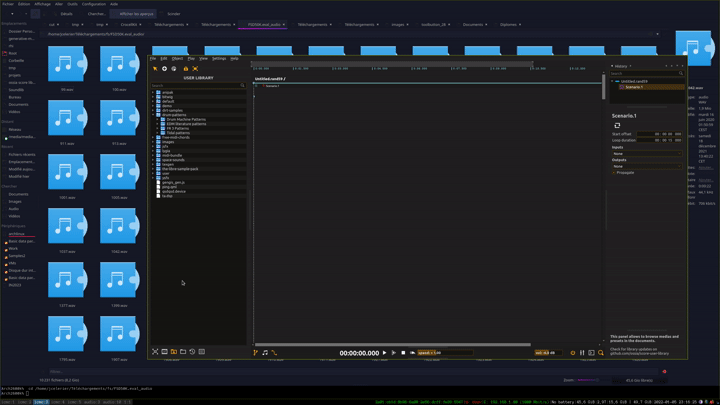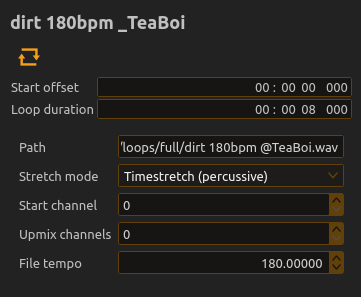Sound file process
To add a sound file, the easiest way is to drag’n’drop it either from the operating system, or from the library.

Timestretching
ossia score supports 4 modes of playback:
- No stretching at all (Raw).
- Re-pitching through resampling thanks to the libsamplerate library.
- Time-stretching (pitch does not change) thanks to the Rubberband library, in a mode optimized for drums and another for tonal instruments.
If a file has any tempo information (either through ACID tags or a BPM present in the filename), it is automatically assumed to be a loop and put in loop mode with the timestretch enabled.
The tempo of the soundfile can be adjusted through the inspector ; the ratio between its tempo and the current playback tempo will be used to timestretch / repitch accordingly.

RAM / disk playback
score will stream .wav / .aiff files at the same samplerate than the project from disk directly. All the other files will be decoded first and read from RAM.
- Until a choice is implemented, we recommend users who have large .wav files and slow hard drives to set-up a RAMDisk manually.
Supported formats
score should be able to read any file supported by FFMPEG. Current releases are built with FFMPEG 4.4. The list of supported audio format is available here.